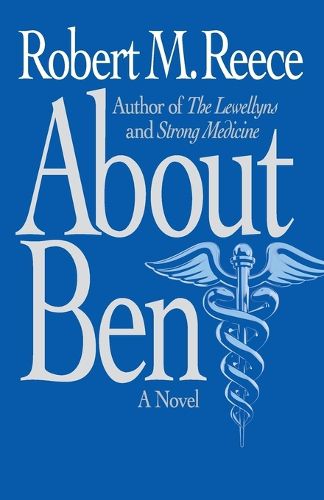Readings Newsletter
Become a Readings Member to make your shopping experience even easier.
Sign in or sign up for free!
You’re not far away from qualifying for FREE standard shipping within Australia
You’ve qualified for FREE standard shipping within Australia
The cart is loading…






This title is printed to order. This book may have been self-published. If so, we cannot guarantee the quality of the content. In the main most books will have gone through the editing process however some may not. We therefore suggest that you be aware of this before ordering this book. If in doubt check either the author or publisher’s details as we are unable to accept any returns unless they are faulty. Please contact us if you have any questions.
Nothing in his worst nightmares could have prepared Ben Levinson for what befell him in 1952 as a twenty-three-year-old medical student. With legs paralyzed from poliomyelitis, he wondered how he could function as a doctor. And how could he marry, have a family, teach his children how to kick a ball or swing a bat? When Ben was ten years old, his Uncle Abraham came to live with his family after escaping Nazi Germany in 1939. He had been a physician in the slums of Hamburg, ministering to the city's poor. He became Ben's role model and counsel as he fulfilled his dream to be a doctor. With help from his parents and wife, Ben rose above his disability and shaped new paths in pediatrics. He raised awareness of underappreciated pediatric conditions: lead poisoning, child abuse and neglect, malnutrition, toxic childhood ingestions, injuries arising from defective products, and developmental disorders. Ben was admired for his devotion to patients, boundless energy, and comprehensive knowledge. He was considered "the pediatricians' pediatrician." And like his Uncle Abraham, Ben delivered optimal medical care to children of the inner-city poor. Most of all, he was respected for his resilience in the face of adversity. His pioneering efforts to eradicate childhood lead poisoning set new standards for community and public health. He married outside of his religion and raised two children with his Irish Catholic wife, Cathy. Their wedded lives were successful by virtue of flexible and supportive parents and the couple's dedication, courage, and determination.
$9.00 standard shipping within Australia
FREE standard shipping within Australia for orders over $100.00
Express & International shipping calculated at checkout
This title is printed to order. This book may have been self-published. If so, we cannot guarantee the quality of the content. In the main most books will have gone through the editing process however some may not. We therefore suggest that you be aware of this before ordering this book. If in doubt check either the author or publisher’s details as we are unable to accept any returns unless they are faulty. Please contact us if you have any questions.
Nothing in his worst nightmares could have prepared Ben Levinson for what befell him in 1952 as a twenty-three-year-old medical student. With legs paralyzed from poliomyelitis, he wondered how he could function as a doctor. And how could he marry, have a family, teach his children how to kick a ball or swing a bat? When Ben was ten years old, his Uncle Abraham came to live with his family after escaping Nazi Germany in 1939. He had been a physician in the slums of Hamburg, ministering to the city's poor. He became Ben's role model and counsel as he fulfilled his dream to be a doctor. With help from his parents and wife, Ben rose above his disability and shaped new paths in pediatrics. He raised awareness of underappreciated pediatric conditions: lead poisoning, child abuse and neglect, malnutrition, toxic childhood ingestions, injuries arising from defective products, and developmental disorders. Ben was admired for his devotion to patients, boundless energy, and comprehensive knowledge. He was considered "the pediatricians' pediatrician." And like his Uncle Abraham, Ben delivered optimal medical care to children of the inner-city poor. Most of all, he was respected for his resilience in the face of adversity. His pioneering efforts to eradicate childhood lead poisoning set new standards for community and public health. He married outside of his religion and raised two children with his Irish Catholic wife, Cathy. Their wedded lives were successful by virtue of flexible and supportive parents and the couple's dedication, courage, and determination.